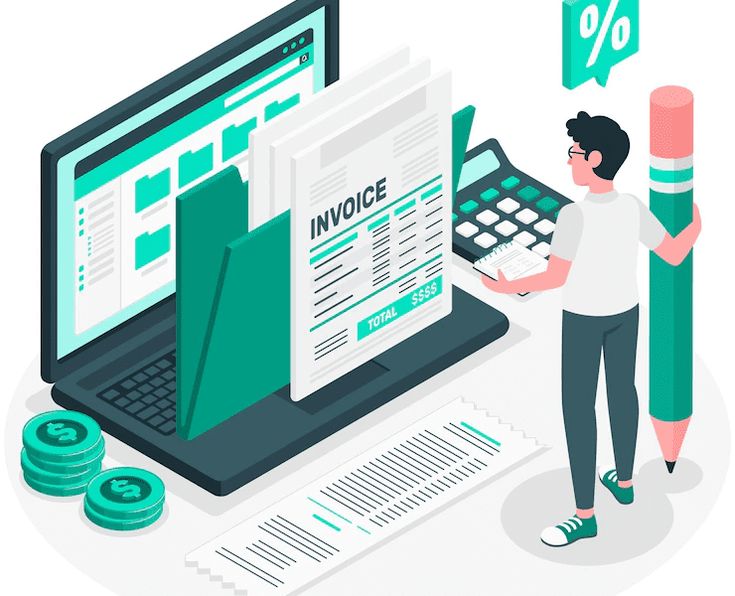Introduction
In today’s fast-paced digital world, businesses relying on paper-based invoicing face numerous challenges, including high costs, processing delays, and manual errors. Traditional invoicing methods slow down cash flow and create inefficiencies in financial management.
This is where digital invoicing steps in, offering businesses a streamlined, automated invoicing solution that enhances accuracy, improves cash flow, and ensures compliance with regulations. In this blog, we will compare digital invoicing vs. traditional invoicing, highlight the benefits of digital invoicing, and explore why businesses should make the switch to digital invoicing.
Audience and Industry
This article is intended for businesses of all sizes, from small startups to large enterprises, across various industries such as retail, manufacturing, finance, and logistics. Organizations looking to improve financial operations, reduce manual errors, and enhance compliance with invoicing regulations will benefit from adopting digital invoicing.
Summarizing What Will Be Covered in the Article
In this blog, we will cover:
- The definition and working of digital invoicing
- A detailed comparison of digital invoicing vs. traditional invoicing
- The benefits of digital invoicing for businesses
- Steps to implement a digital invoicing system
- How to choose the best digital invoicing software
- The impact of digital invoicing on compliance and security
By the end of this article, you’ll have a clear understanding of why switching to digital invoicing is essential for modern businesses.
What is Digital Invoicing?
Digital invoicing, or electronic invoicing, is the digital alternative to traditional paper-based invoices. Instead of manually generating, printing, and mailing invoices, businesses can create and send invoices electronically using specialized invoicing software. These invoices are transmitted in structured formats such as XML, EDI, or PDFs with embedded data, making transactions seamless and reducing the risk of errors.
Unlike traditional invoices, which require extensive manual handling, digital invoicing automates the entire invoicing cycle. This enhances efficiency, reduces costs, ensures faster payment processing, and simplifies record-keeping. By integrating with accounting systems, digital invoicing helps businesses maintain accurate financial records and improve cash flow management.
What is Traditional Invoicing?
Traditional invoicing refers to the manual process of creating and sending invoices using paper-based methods. Businesses typically generate invoices using word processors or accounting software, print them out, and mail them to customers. Alternatively, invoices may be sent as PDF attachments via email. While this method has been widely used for decades, it is slow, prone to human errors, and requires additional resources for storage and tracking.
Traditional invoicing involves manual data entry, which increases the risk of errors such as incorrect amounts or missing details. Additionally, paper invoices are more susceptible to loss, damage, or delays in delivery. Managing physical invoices also leads to higher operational costs related to printing, postage, and document storage. These inefficiencies make traditional invoicing less viable in today’s digital landscape, where automation and efficiency are key business priorities.

Digital Invoicing vs. Traditional Invoicing: A Comparison
| Feature | Traditional Invoicing | Digital Invoicing |
| Processing Time | Time-consuming, manual entry | Instant, automated processing |
| Accuracy | High risk of errors due to manual data entry | Reduces errors with automation |
| Cost | Expensive (paper, printing, postage) | Cost savings with digital invoicing (no paper, digital storage) |
| Security | Risk of fraud, loss, and damage | Secure invoicing solutions with encryption and backups |
| Tracking | Difficult to track paper invoices | Real-time invoice tracking available |
| Compliance | May not meet regulatory standards | Compliance with digital invoicing regulations ensured |
Switching from paper-based invoicing vs. digital invoicing allows businesses to optimize financial operations, minimize errors, and enhance efficiency.
Key Benefits of Digital Invoicing for Businesses
- Faster Processing & Payments
- Digital invoicing speeds up the billing cycle, leading to faster payments and improved cash flow.
- Cost Efficiency
- Eliminates expenses related to paper, printing, storage, and postage.
- Error Reduction
- Automated systems reduce human errors, ensuring accuracy in transactions.
- Paperless Billing Benefits
- Environmentally friendly and reduces office clutter.
- Invoice Processing Efficiency
- Streamlines accounts payable and receivable, enhancing productivity.
- Enhanced Security & Compliance
- Digital invoices are encrypted and stored securely, reducing the risk of fraud and ensuring compliance with regulatory standards.
How to Implement a Digital Invoicing System
Switching to cloud-based invoicing solutions requires a structured approach. Here’s how businesses can implement a digital invoicing system successfully:
- Assess Current Invoicing Processes
- Identify inefficiencies in your current paper-based invoicing system.
- Choose the Best Digital Invoicing Software for Businesses
- Select software that integrates with existing accounting tools and supports automated invoicing systems.
- Ensure Compliance with Digital Invoicing Regulations
- Adhere to government regulations and tax requirements for digital invoicing.
- Train Employees & Inform Clients
- Educate staff and customers on the new invoicing process to ensure a smooth transition.
- Monitor & Optimize
- Regularly review system performance and make improvements for efficiency.
How MyBM Can Help Businesses with Digital Invoicing
For businesses looking for a seamless transition to digital invoicing, MyBM offers a robust solution tailored to modern financial needs. With MyBM, businesses can easily generate, send, and track invoices in real-time, ensuring smooth transactions and compliance with digital invoicing regulations. The platform allows users to manage multiple businesses in one account, simplifying financial operations across various entities. Additionally, MyBM provides secure invoicing solutions with built-in encryption, helping businesses reduce errors, cut costs, and maintain accuracy in financial records.
Conclusion
The shift from traditional invoicing to digital invoicing for businesses is no longer optional but a necessity for staying competitive. The cost comparison of digital invoicing vs. traditional invoicing clearly demonstrates the financial and operational benefits of going digital. By leveraging automated invoicing systems, businesses can enhance accuracy, save costs, improve security, and comply with financial regulations.
If your business is still using paper-based invoicing, now is the time to switch to a secure, cloud-based invoicing solution and experience the benefits of digital invoicing firsthand.




